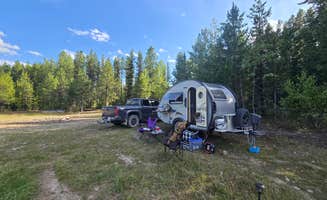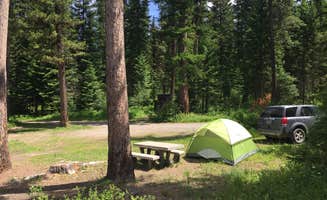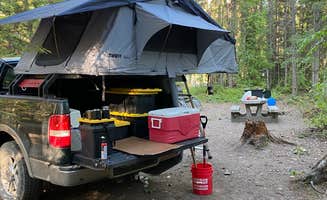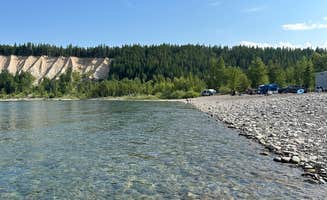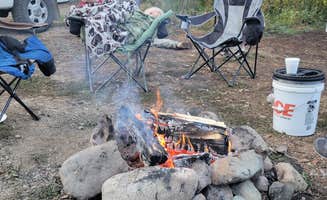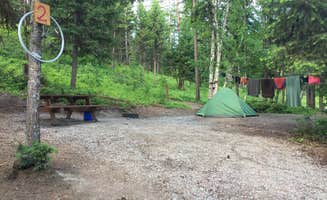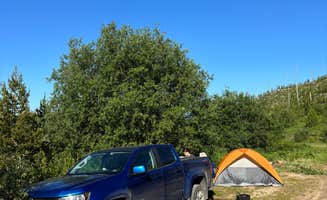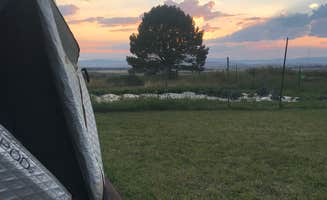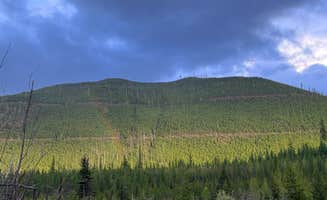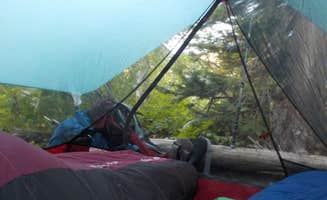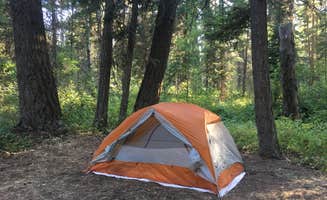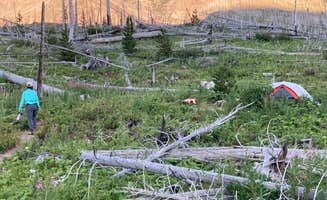Dispersed tent camping near Bigfork, Montana provides direct access to both Flathead Lake and neighboring forest service lands at elevations ranging from 2,900 to 4,500 feet. Summer temperatures typically range from 75-85°F during day and 45-55°F at night, with frequent afternoon thunderstorms common in July and August. The surrounding Flathead National Forest contains over 2.4 million acres with numerous primitive camping options within a 30-minute drive of Bigfork.
What to do
Fishing access points: Yellow Bay State Park Campground offers direct access to some of Flathead Lake's deepest waters. According to one camper, "Yellow Bay is the deepest part of Flathead Lake and it's a very cool spot to swim or fish."
Kayaking and paddleboarding: The clear waters and protected bays create ideal conditions for paddlers of all experience levels. A visitor to Yellow Bay State Park Campground noted, "We go tubing, fishing, water skiing, and swimming. We also really love to kayak and stand up paddle board, and this is the perfect place to do it."
Swimming in rocky shorelines: The smooth stone beaches at many shoreline access points provide excellent swimming opportunities. One camper at Blankenship Bridge described it as "Right on a clear river... The perfect spot fo dogs!" with safe swimming areas accessible directly from campsites.
Hiking in Jewel Basin: Multiple trail systems within 30 minutes of Bigfork offer day hiking options. A visitor explained, "I hiked in the Jewel Basin area, which was beautiful. I saw some wildlife and even came into close contact with a little chipmunk!"
What campers like
Crystal clear water: The clarity of Flathead Lake and surrounding water bodies consistently impresses visitors. A camper at Ashley Lake South Campground shared, "Ashley Lake never disappoints... it's still beautiful" with its "clear blue water."
Riverside camping spots: Many tent campers appreciate the direct water access. One Blankenship Bridge visitor noted, "We stayed here to have quick access to Glacier National Park... There are plentiful sites, some with fire rings, many spots for car or van campers to park near the beautiful river."
Secluded forest sites: Finding private spots away from crowds is possible with early arrival. At Ryan Road Dispersed Camping, a camper found "Cozy Spot next to Glacier National Park... Quite busy, but spacious enough to feel private."
Proximity to Glacier National Park: Many dispersed sites serve as affordable base camps for park exploration. As one visitor noted, "This spot is only about 5 minutes down the road from the West entrance to Glacier National Park."
What you should know
Road conditions vary significantly: Many access roads require high-clearance vehicles. One visitor to Hungry Horse Reservoir Dispersed warned, "37 miles from Hungry Horse to this location, almost 25 of the unpaved and some of the road is really rough and extremely narrow, much of it along steep Cliffs."
Arrive early for prime spots: Popular areas fill quickly, especially on weekends. A camper at Ryan Road Dispersed Camping advised, "There are only about 10 sites so get there early."
Cell service limitations: Most primitive camping areas have unreliable connectivity. At Hungry Horse Reservoir, a camper noted, "No reliable service for Verizon."
Wildlife precautions required: All camping areas require proper food storage due to bear activity. Campers at Dorris Creek Road observed, "Make sure you pack out your trash, we saw some overflowing fire rings that were terrible so please make sure to have an appropriate way to pack it out!"
Tips for camping with families
Shallow protected swimming areas: Some locations offer gentler water access points ideal for children. Yellow Bay features "a roped off public swim area, along with a small boat dock nearby."
Sites with natural features: Locations with streams or protected bays can provide natural entertainment. One family camping at Yellow Bay State Park Campground appreciated that "a small creek runs right through the camp and into the lake."
Campgrounds with basic amenities: For families needing facilities, select sites with toilets. At Yellow Bay, "There are fire rings at the campsites, and a pit toilet at the parking area. Yellow Bay is also a state park, and there are regular restrooms at the parking area just a short walk away from the camping area."
Gear transportation assistance: Some walk-in tent sites offer equipment to help move camping gear. At Yellow Bay, sites are "just 25 yards from a parking area. There is a wheelbarrow for moving your items if you need it."
Tips for RVers
Size limitations at most sites: Large RVs face significant challenges accessing many dispersed areas. At Ashley Lake South Campground, "The camp sites are a bit rough to get too but as long as you're tent camping or have a very small and agile pull behind you'll be okay."
Alternative parking options: Some RVers find success parking at trailheads when designated sites are full. At Camp Misery Trailhead, "It seems overnight parking is allowed at the trailhead since camping at the lakes is quite popular."
Road access challenges: Many forest roads narrow significantly. At Ryan Road, a camper with a larger rig noted, "The road in was narrow. Glad I didn't have any problems with on coming riggs."
Weather impact on road conditions: Spring runoff and summer thunderstorms can quickly deteriorate access roads. At Blankenship Bridge, a visitor warned about "Deep rutted muddy holes filled with water to get to site. Sketchy low trees and narrow road."


